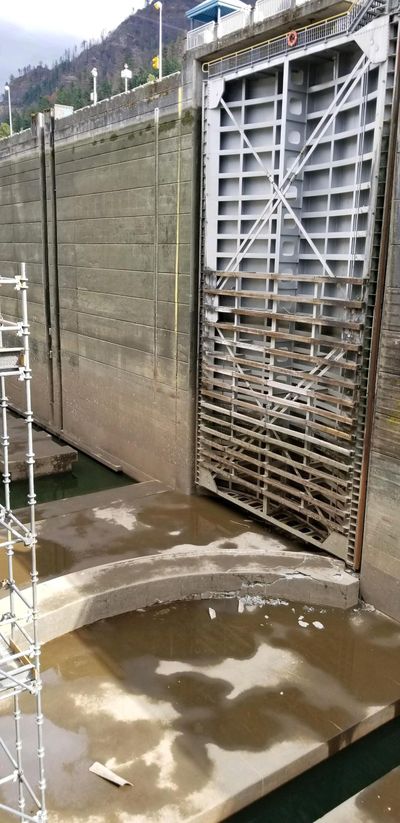Columbia River barge lock to return to service Sept. 30

PORTLAND, Ore. – Huge barges carrying wheat, wood and other goods will remain at a standstill for the rest of the month while workers repair a critical navigation lock at the Bonneville Dam on the Columbia River.
The locks will reopen Sept. 30, officials with the U.S. Army Corps of Engineers in Portland, Oregon, said Wednesday. The navigation lock was closed Sept. 5 after operators detected problems and further investigation revealed cracked concrete.
The closure comes at the peak of wheat harvest and could be devastating for farmers who ship to Asia via barges that fill up at more than two dozen grain elevators along the river network as far inland as Lewiston, Idaho.
“It’s important to recognize the patience from our Columbia River users, who depend on this critical piece of infrastructure to run their businesses,” Portland District Commander Col. Aaron Dorf said. “It is not lost on anyone in the Portland District that this outage has tremendous impacts to Columbia River users. Between now and Sept. 30, our teams will be working around the clock to construct the new sill to restore Columbia River traffic.”
The crack in the concrete sill was discovered after the lock was drained of water over the weekend. On Monday, emergency repair crews were working to demolish the faulty concrete section so repairs could begin, according to Chris Gaylord, a spokesman for the Army Corps of Engineers.
Work on the lock also will include drilling holes for rebar, forming the new sill structure and allowing time for the concrete to cure.
It’s not known what caused the damage. According to the Portland District engineering team, the damage they observed was unusual, and the annual inspections of the dam, last performed in January 2017, did not reveal any abnormalities.
The closure means that barges headed upstream can’t travel the Columbia River past the Bonneville Dam and those headed downriver toward the Pacific Ocean are stuck behind the Bonneville – effectively halting all river commerce in a vast swath of the Pacific Northwest from eastern Oregon and Washington to Idaho.
The Bonneville Dam is the first in a series of eight dams on the Columbia and Snake Rivers, which together make up a watery highway for goods flowing into and out of the region from the Pacific Rim.
Kristin Meira, executive director of the Pacific Northwest Waterways Association, last week called the Bonneville lock the cork in the bottle for the rest of the system. An email has been sent to Meira seeking comment on what the several-week closure will mean for the wheat harvest and other industries.
Eight million tons of cargo move on the Columbia and Snake rivers each year, and 53% of U.S. wheat exports were transported on the Columbia River in 2017, the latest year for which statistics are available, Meira said.
About $2 billion in commercial cargo travels the entire system annually, according to the U.S. Army Corps of Engineers, and it’s the No. 1 export gate in the U.S. for wheat and barley and the No. 2 export gate for corn.
Navigation locks allow the large barges to pass through the massive concrete dams that were built across the Columbia and Snake rivers decades ago to generate hydroelectricity for the U.S. West.
A boat enters a sealed chamber filled with water – essentially like a giant concrete bathtub – and then the water level is lowered or raised to match the level of the river on the other side of the dam. Then the lock opens on the other side and the boat exits.
The concrete sill that is cracked in the Bonneville Dam is similar to a rubber threshold on the bottom of a door. Just as that rubber strip creates a seal to keep cold air and moisture from leaking in under the door, the concrete sill meets up with the lock’s gate and creates a seal to keep water in the lock.